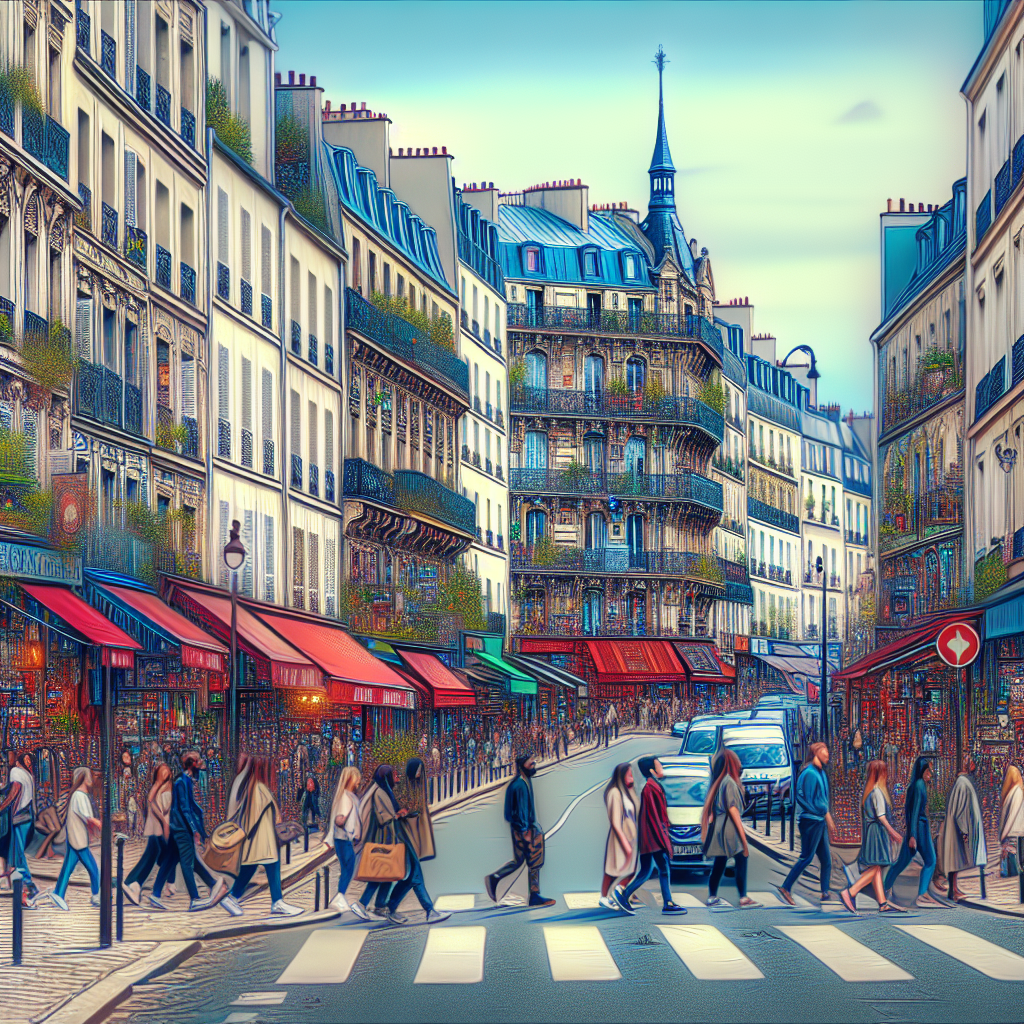Walking through the lively streets surrounding Château Rouge station is like stepping into a vivid tapestry of global cultures converged into one small slice of Paris. Positioned in the heart of the 18th arrondissement, Château Rouge stands not just as a metro station, but as a hub reflecting the dynamic spirit of the multicultural neighborhood around it. The station, which first opened its doors in 1908, has become a bustling confluence of diverse communities and vibrant markets.
Château Rouge station, an integral part of the Paris Métro network, is located in the Montmartre district, known for its iconic art scenes and bohemian vibes. The area is predominantly home to Afro-Caribbean and North African immigrants, leading to an eclectic mix of languages, aromas, and sounds. It’s a place where stalls selling colorful textiles sit alongside shops offering fragrant spices and fresh produce from all over the world. This scene makes you feel like you’ve traveled continents in mere meters.
The station and its vicinity have long been celebrated for their rich cultural offerings. Yet, they have also been a focus of socio-political discussions around urban planning and gentrification. As the area draws more visitors, the pressures on housing and local businesses increase, sparking debates on how to maintain an economically inclusive community without losing the cultural essence that makes it unique. For many, Château Rouge is a symbol of Paris' promise as a culturally rich metropolis that welcomes all.
On days when the African market is in full swing, you can find a plethora of goods, from traditional garments to exotic foods that tantalize the senses. It's a world where one can truly appreciate the vibrant cultures of the African diaspora. However, walking through Château Rouge isn’t just about taking in the sights and sounds. It's about understanding the fabric of the community—a place where stories of migration, opportunity, and resilience unfold daily.
While the neighborhood's authenticity draws many to its orbit, some argue about the challenges it faces. Concerns over sanitation, street safety, and the impacts of gentrification aren't overlooked. It’s essential to navigate this dialogue with empathy, acknowledging both the need for urban improvement and the right of long-term residents to retain their cultural space. Often, this tension between development and preservation serves as a microcosm for larger urban debates happening around the globe.
Political liberalism supports the notion of city policies that blend progress with inclusivity, highlighting the importance of diverse voices in shaping urban futures. As cities evolve, keeping the heart of neighborhoods like Château Rouge intact means recognizing their historical and cultural significance. For younger generations, particularly Gen Z, these discussions offer a chance to advocate for communities' needs while exploring ways to innovate.
The day-to-day life around Château Rouge is a testament to the city’s vibrancy and resilience. From the early hours, the humming vibrancy of the neighborhood is palpable—a constant affirmation of life, despite ongoing challenges. And while every neighborhood contends with its unique blend of challenges, the dynamic spirit of Château Rouge finds harmony in diversity.
Indeed, navigating Château Rouge station and its surrounding area is a multidimensional experience. It offers you a window into a world where cultures meet, blend, and create something beautiful. The conversations about its future, though often complex, are crucial in aspiring towards a fair and inclusive urban environment. By advocating for sustainable urban development policies, we — empowered by creativity and empathy — can honor Château Rouge's past while shaping its future.

